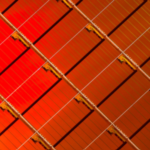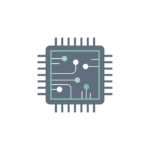No matter how simple or complex an electronic circuit may be, the PCB is its fundamental component. Today’s PCBs are inherently more complex due to the widespread use of surface mount devices (SMD) and the requirement for numerous layers. No matter the application, all PCBs must perform correctly and be free of flaws. This is a requirement that applies to all PCBs, regardless of application. In order to ensure the quality of the finished product, stringent inspection and test methods must be defined. Modern modern circuits have hundreds of components and thousands of solderings and interconnections. It is possible that certain electronic circuits leave the prototyping stage with flaws or problems that must be found and fixed before the product reaches the final stage due to the short time-to-market and intense competition in many electronics areas.
Inspection of PCB
Manual visual inspection (MVI) used to be adequate to identify possible problems in electrical circuits, such as short circuits, faulty solder joints, interrupted traces, component polarity that was reversed, or even missing components. The issues with the MVI method, however, were due to the errors that people made when executing tedious and repetitive tasks. This led to cases where faults were either not discovered or were discovered at a very late point in the design, making it prohibitively expensive to make changes to the circuit. The process of visual inspection was then automated utilizing the AOI (Automated Optical Inspection) method. Today, AOI is a well-established inspection technique that is accessible on a number of pick-and-place machines and is frequently utilized during welding preflow and welding postflow. The limitations of AOI, no longer able to identify the connections and welds concealed inside the package, have been brought to light by the expanding usage of SMD components and BGA (Ball Grid Array) packages. As a result, the AXI (Automated X-ray Inspection) technique was created, which relies on the employment of X-rays capable of evaluating multi-layer PCBs with a high component density in addition to seeing through packages. Following the inspection step, an accurate test on the fully built circuit will be done on the PCB.
Why inspection is needed
A PCB is made up of various components, each of which has an impact on how well the electronic circuit functions overall. The following tests should be included in the minimal set that must be run:
- Lamination, which measures the laminate’s resistance to peeling by force or application of heat
- Copper plating, tested with tensile strength and analyzing the resulting elongation
- Environmental test, especially for PCBs that operate in humid environments
- Mechanical resistance
- Soldering check
- Cleanliness (weather resistance, including humidity and corrosion)
- Holes and vias check.
Inspection methods
As an inspection technique, AOI can identify PCB flaws or problems at an early stage of development. AOI is a visual inspection technique that makes use of cameras to take pictures of the board from various angles and under various lighting conditions. Additionally, this method has OCR technology that can decipher the serigraphs on the PCB. The obtained photos are then compared to the desired outcome (the so-called “golden board”). This technique can be applied at many phases of development and has the benefit of detecting various types of flaws. The key drawback is that line-of-sight control is restricted, making it impossible to inspect connections covered by BGA or other types of packages.
SMT technology’s great density and the difficulty to see connections in BGA and CSP (Chip Scale Package) packaging necessitated more precise inspection techniques, like those based on X-ray technology (AXI). Welds are easily distinguishable in radiographic pictures because they are manufactured with material whose atomic weight is higher than that of the other components on the board. The primary benefit of the AXI technique is that it finds every connection and weld, even those that are concealed by the packaging. Additionally, solder junctions may be examined, highlighting any potential bubbles. There is also a good likelihood of finding any replicas of exclusive electronic components. AXI, on the other hand, is a somewhat pricey method whose investment can only be made sense for high density PCBs and parts with BGA or CSP packaging.
After assembly, an in-circuit test (ICT) is conducted to confirm that each electronic component is in its proper location and is operating properly. Short circuits, open circuits, resistance, capacitance, and other factors are checked throughout the test. A flying probe is utilized for this, made up of a variety of drives and sensors that move freely over the board to carry out the measurements needed for the test. By adapting the same test method to boards with varied layouts, the software that controls the probe can be changed. As an alternative, a test fixture made of a bed of nails customized for the particular DUT might be utilized (Device Under Test). Each “nail” acts like a genuine sensor and is capable of electrically connecting a particular area of the DUT to the testing apparatus. The bed-of-nails technique is expensive and limited in flexibility (each board has its own bed-of-nails), and it also exhibits certain challenges when testing boards with high component density when pin spacing is restricted. The ICT method offers the advantage of being able to identify a number of flaws in both the individual components and their connections without having to power the board. Because of the high cost and complexity of the control and bed-of-nails software, it is not possible to test the connectors, which is a major drawback in analog and digital systems with several cards.
When it is not possible to reach all of the circuit’s nodes, the boundary scan technique, which was developed to examine the connections between the components on the board, is frequently used to test integrated circuits (ICs). The output (TDO) and input (TDI) data pins of the “cells,” which are used to replace the physical probes, are sequentially connected to appropriate shift registers and multiplexing circuitry. A TCK (Test Clock) signal times the boundary scan logic, and a TMS (Test Mode Select) signal activates the test. Thus, the I/Os can be accessed without the need for physical test points on the board using the straightforward 4-wire serial interface (which becomes a 5-wire interface if an optional reset signal is supplied) known as TAP (Test Access Port). Manufacturers’ Boundary Scan Description Language (BSDL) files include details on boundary scan components. The benefit of the boundary scan method is that it may be used for a variety of applications, including CPU emulation, RAM and flash memory testing, and system level testing. The exam can also be performed on the actual playing field. On the other hand, its principal drawback is that it is not a comprehensive test and that only certain components that enable this kind of interface are covered.
The final step of the inspection and verification procedure is the functional test. As its name suggests, its purpose is to test a circuit’s functionality by simulating the electrical signals capable of stimulating it and observing the results. Through the interface connectors, the circuit is correctly energized and electrically stimulated. A software program analyzes the measurements taken at appropriate locations on the PCB and confirms that they match the design requirements. The benefit of the functional test is that it can identify potential circuit anomalies that only appear when the circuit is energized. In addition, it can evaluate the power absorption at particular circuit points. The expense and complexity of the test system are the drawbacks. In truth, it calls for extremely complex but not particularly adaptable machinery that is frequently set up to only run a card’s test.
Which method shall be used?
Whichever approach is used, PCB testing is a crucial phase in the electronic design process since it may save a lot of time and money by spotting potential flaws in the circuit before it is put into final production. In general, all potential flaws can be found using a mix of the aforementioned inspection and testing techniques, with costs varying according to the application and complexity of the circuit being tested.







